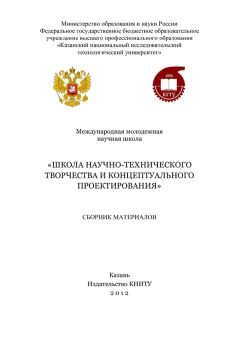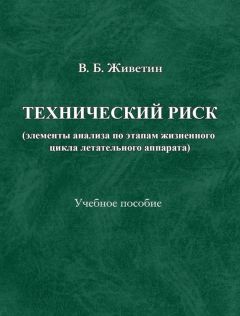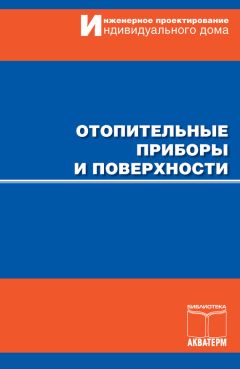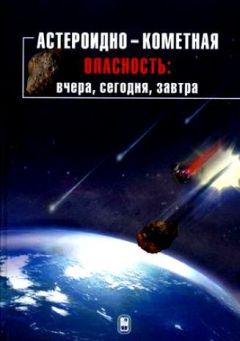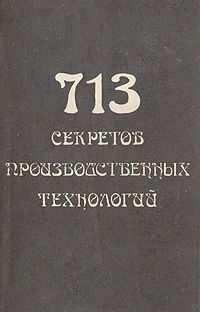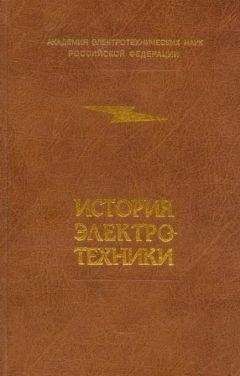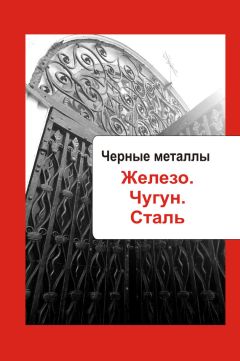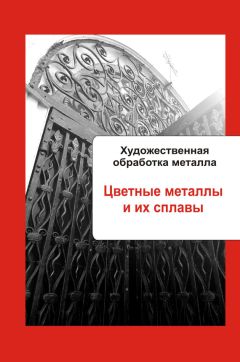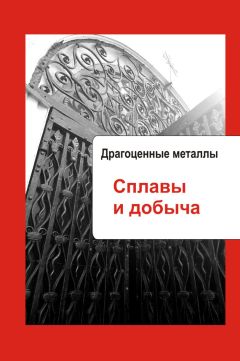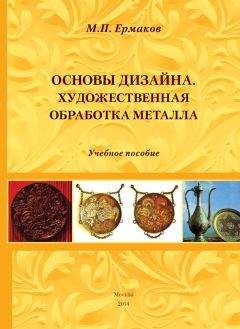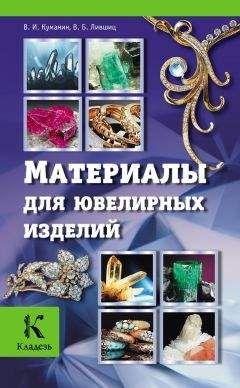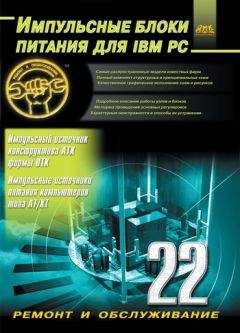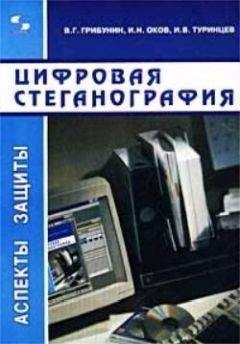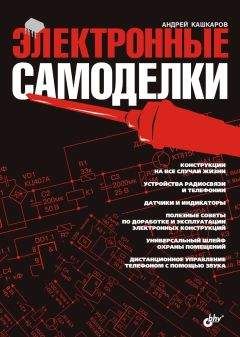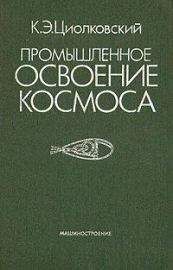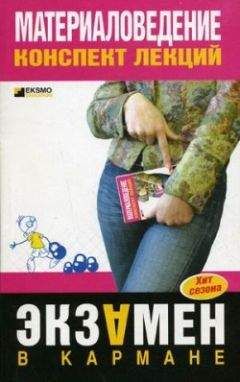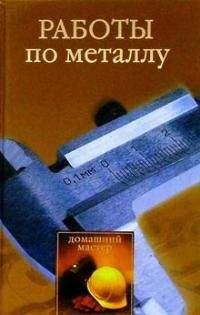Я. Ившин - Metal Corrosion. Electroplating (Защита от металлов от коррозии. Гальванотехника)
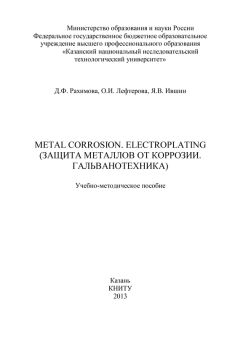
Все авторские права соблюдены. Напишите нам, если Вы не согласны.
Описание книги "Metal Corrosion. Electroplating (Защита от металлов от коррозии. Гальванотехника)"
Описание и краткое содержание "Metal Corrosion. Electroplating (Защита от металлов от коррозии. Гальванотехника)" читать бесплатно онлайн.
Вопросы защиты металлов от коррозии рассмотрены в оригинальных текстах зарубежных авторов, предназначенных для занятий по курсам «Специализированный профессионально-ориентированный перевод (английский язык)» и «Английский язык (технический перевод)». Представлены практические задания как для аудиторной, так и для самостоятельной работы.
(From www.clihouston.com).
5 . Read the text again. Decide whether the following statements are true or false.
1. Microbiological corrosion (MIC) refers to corrosion and ensuing alteration of metal surface caused by biological organisms.
2. Most MIC is defined as limited corrosion because most organisms do not form in a continuous film on the metal surface.
3. The type thiobacillus can form an environment of up to 70 percent ferrum acid.
6 . Work in pairs. Translate the following text from English into Russian.
MIC is not caused by a single microbe, but is attributed to many different microbes. These are often categorized by common characteristics such as by-products (i.e., sludge producing) or compounds they effect (i.e. sulfur oxidizing). In a general sense, they all fall into one of two groups based upon their oxygen requirements; one being aerobic (requires oxygen) such as sulfur oxidizing bacteria, and the other being anaerobic, (requires little or no oxygen), such as sulfate reducing bacteria.
General corrosion affects the entire surface or at least the wetted surface. MIC, on the other hand, is very localized. It creates a nodule and a pit beneath the nodule. There can be only a few nodules or there can be many. Within these nodules microbes rarely work alone but operate as a mixed community of differing types and groups. The different microbes perform different functions within the community. This interaction allows a community to thrive in environments that are actually hostile to some of its members. For example, in an aerobic environment, anaerobic bacteria are generally inhibited or killed. But within a community the aerobic bacteria reside in the outer layer of the nodule consuming the oxygen in the water as it penetrates the nodule. Thus, the inner portion of the nodule experiences a reduced oxygen level allowing anaerobic bacteria to thrive.
7.Read the text. What is its main idea?
Почва является вместилищем необычайно обильной и разнообразной микрофлоры, представленной многочисленными группами бактерий, плесневыми грибками, дрожжевыми организмами и т. п.
Количество разнообразных бактерий, приходящееся на 1 грамм почвы, достигает сотен миллионов, а иногда и десятков миллиардов. Основная масса микроорганизмов встречается в верхних горизонтах почвы, однако и в подпочвенных слоях они содержатся в значительном количестве. В некоторых случаях эти организмы могут вызывать интенсивную коррозию, получившую наименование микробиологической коррозии.
Действие микроорганизмов сводится или к непосредственному влиянию на скорость анодной и катодной реакций, или к созданию коррозийной среды.
Наибольшее значение и распространение в почвенных условиях имеет анаэробная коррозия.
Коррозионный процесс в анаэробных условиях заключается в том, что благодаря жизнедеятельности микроорганизмов в среде, окружающей подземное сооружение, сульфаты восстанавливаются и преобразуются в сероводород. Последний взаимодействует с железом, образуя сернистое железо. Освободившийся при восстановлении сульфатов кислород обеспечивает деполяризацию катода, на котором должен накапливаться водород в связи с растворением железа. Таким образом, через катодную деполяризацию бактериальный процесс стимулирует развитие коррозии.
(From www.groont.com).
8 . Work in pairs. Interpret the following passage sentence by sentence.
Corrosion resulting from the attachment and activities of microorganisms on metal surfaces is referred to as microbiologically influenced corrosion (MIC) or biocorrosion. It occurs in diverse environments and is not limited to aqueous submerged conditions, but also takes place in humid atmospheres. It is an electrochemical process in which the participation of microorganisms is able to initiate, facilitate, or accelerate the corrosion reactions without changing the process’s electrochemical nature. MIC is a result of interactions that are often synergistic between the metal surface, abiotic corrosion products, and microbial cells and their metabolites. The latter includes organic and inorganic acids and volatile compounds, such as ammonia and hydrogen sulfide. Microbiologically mediated reactions do not result in a unique type of corrosion, but they can induce localized corrosion, change the rate of corrosion and also inhibit corrosion.
Most MIC studies have focused on bacterial involvement; however, under aerobic conditions, other single-celled organisms, such as fungi, yeast and diatoms, can influence corrosion. The predominant types of bacteria associated with MIC are sulfate-reducing bacteria (SRB), sulfur-oxidizing bacteria, iron-oxidizing/reducing bacteria, manganese oxidizing bacteria, and bacteria secreting organic acids and slime. These organisms coexist within a biofilm matrix on metal surfaces, functioning as a consortium in a complex and coordinated manner. The various mechanisms of biocorrosion reflect the variety of physiological activities carried out by these different types of microorganisms when they coexist in biofilms. Despite decades of study on MIC, it is still not known with certainty how many species of microorganisms contribute to corrosion, and researchers continue to report on the formation of biofilms by an ever-widening range of microbial species.
9 . Give English equivalents to the following word combinations and learn them by heart:
деятельность микроорганизмов
различные среды
электрохимический процесс
органическая кислота
металлическая поверхность
сероокисляющие бактерии
образование биопленок
микробные виды
аэробные условия
синтетическая коррозия
10 . Give Russian equivalents to the following word combinations and learn them by heart:
inhibit corrosion
entire surface
organic acid
hydrogen sulfide
manganese oxidizing bacteria
predominant type
biofilm matrix
physiological activities
11 . Translate the following sentences into Russian.
1. Some bacteria can directly reduce metal atoms to ions.
2. Hydrogen ions are produced, along with hydroxyl ions, by the breakdown of water, and the electrons to form atomic hydrogen from the hydrogen ion are produced by the oxidation of atomic iron.
3. The source of electrons is the oxidation of the metal while the electron sink is reduction of hydrogen ions.
4. MIC has been observed as one of the major causes of underground pipeline corrosion.
5. Sulphate reducing bacteria (SRB) have been reported to be responsible for extensive corrosion in hydrocarbon industry.
6. There are other types of corrosion-enhancing bacteria such as iron-reducing bacteria, iron-oxidizing bacteria, nitrifying bacteria, methanogenic bacteria and so on.
7. New technologies that may assist mitigation are basically based on using certain biological technologies (such as use of “good” bacteria against corrosion-related bacteria).
8. Almost all known engineering materials (from carbon steel to stainless and duplex stainless steels and also non-ferrous metals such as copper alloys and non-metals such as some polymers and concrete) are susceptible to MIC.
9. Gas velocity and temperature in the pipeline play a significant role in determining if and where corrosion damage may occur.
10. Accelerated Low Water Corrosion (ALWC) is a particularly aggressive form of MIC that affects steel piles in seawater near the low water tide mark.
12 . Translate the following sentences into English.
1. Биокоррозия (от греч. bios – жизнь и позднелат. corrosio – разъедание) – разрушение конструкционных материалов и противокоррозионных защитных покрытий под действием присутствующих в среде микроорганизмов (бактерий, грибов, водорослей, дрожжей).
2. Биокоррозия подразделяется на бактериальную и микологическую.
3. Наиболее опасными микроорганизмами являются бактерии, так как они быстро размножаются и легко приспосабливаются к условиям окружающей среды.
4. Благоприятными условиями для развития плесени является температура 25–35 °C и повышенная влажность воздуха, превышающая 75 %.
5. В процессе жизнедеятельности микроорганизмов образуются продукты обмена веществ, повышающие коррозионную активность среды (минеральные и органические кислоты, щелочи, пероксиды и др.)
6. Алюминиевые сплавы – одни из наиболее устойчивых к коррозии конструкционных материалов. Однако и они подвержены биокоррозии.
7. Биокоррозия металлов может быть вызвана действием сульфатовосстанавливающих бактерий.
8. Предполагается, что бактерии замещают и поглощают водород, образуя очаги, на анодных участках которых происходит усиленная коррозия металла.
9. Анаэробная коррозия приносит огромный ущерб нефтегазовой промышленности (трубопроводы, емкости для хранения и транспорта нефтепродуктов).
10. Для объяснения процесса коррозии в анаэробных условиях Кюр и Флюгт предложили следующие реакции: анодную, катодную, катодную деполяризацию при участии бактерий, образование продуктов коррозии.
13 . Translate the following word combinations.
Cульфатовосстанавливающие бактерии – stainless steel – скорость потока газов – hydrogen sulfide – органические кислоты – suitable environments – аэробные условия – proliferate – медные сплавы – high humidity – полимеры – structural materials – минеральные кислоты – single-celled organisms – катодная деполяризация – formation of biofilms.
14 . Give the definitions of the words and word combinations.
1. Microbe is …
2. Sludge is …
3. Microbial flora is…
4. Velocity is …
5. Synergetics is …
15 . Give the example(s) of the microbial corrosion.
16 . Answer the following questions using texts from Unit 3.
1. What does microbial corrosion mean?
2. What types of microbiological corrosion do you know?
3. What are the predominant types of bacteria associated with microbial corrosion?
4. Describe anaerobic corrosion.
17 . Summarize the general ideas developed in all the texts of the Unit 3.
Unit 4
ATMOSPHERIC CORROSION
1 . Read the international words, guess their meanings and give the Russian equivalents.
Temperature, atmospheric, industry, salt, characterize, system, chloride, aggressive, factor, material, sulphide, synergistic, parameter, conventional, function, manner, transferable.
2 . Read and translate the following verbs.
To classify, to attack, to expose, to increase, to promote, to contain, to contribute, to influence, to suffer, to comprise, to lead to, to correlate, to restrict, to find, to transfer, to know.
3 . Match the English phrases from column A with the Russian phrases in column B.
4 . Read and translate the text. Summarize it in Russian.
Atmospheric corrosion accounts for more failures on both a tonnage basis and cost basis than any other type of environmental corrosion. Tremendous amounts of steel in automobiles, bridges ad buildings are exposed to the atmosphere and attacked by oxygen and water. The corrosion severity is increased when salt, sulfur compounds and other atmospheric contaminants are present. Atmospheric environments can be classified as: industrial, marine, rural, indoor.
Industrial environments contain sulfur compounds, nitrogen compounds, and other acidic agents that can promote the corrosion of metals. In addition, industrial environments contain a heavier loading of airborne particles, which also contribute to corrosion. Marine environments are characterized by the presence of chloride, an ion that is particularly detrimental to the corrosion behavior of many metals systems. Rural environments are the least corrosive of the atmospheric environments, being characterized by lower levels of acidic compounds and other aggressive species.
The principal factors influencing atmospheric corrosion for a given metal are moisture, temperature and the presence of contaminants in the environment. (From www.researchgate.net).
5 . Read the text again. Decide whether the following statements are true or false.
1. Urban environments are the least corrosive of the atmospheric environments.
2. The main factors influencing atmospheric corrosion for a given metal are pressure, velocity and temperature and the presence of contaminants in the environment.
Подписывайтесь на наши страницы в социальных сетях.
Будьте в курсе последних книжных новинок, комментируйте, обсуждайте. Мы ждём Вас!
Похожие книги на "Metal Corrosion. Electroplating (Защита от металлов от коррозии. Гальванотехника)"
Книги похожие на "Metal Corrosion. Electroplating (Защита от металлов от коррозии. Гальванотехника)" читать онлайн или скачать бесплатно полные версии.
Мы рекомендуем Вам зарегистрироваться либо войти на сайт под своим именем.
Отзывы о "Я. Ившин - Metal Corrosion. Electroplating (Защита от металлов от коррозии. Гальванотехника)"
Отзывы читателей о книге "Metal Corrosion. Electroplating (Защита от металлов от коррозии. Гальванотехника)", комментарии и мнения людей о произведении.






